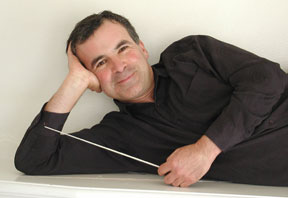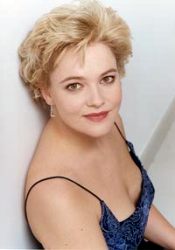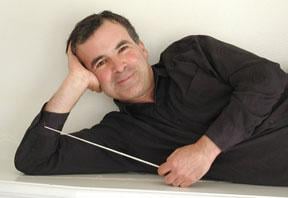
First up on the program, given at St. Mark’s Episcopal Church in Palo Alto, was a fine performance of J.S. Bach’s Orchestral Suite No. 2 in B Minor, BWV 1067, with Tod Brody playing the solo line. There is probably no one in the music-loving world who does not knows the brilliance of the work’s one-and-a-half-minute final movement, the “Badinerie.” That piece is a corker, and Brody executed it well. But, considering that the work is one of the most recognizable compositions for flute in the literature, his performance was not terribly exciting. He should tear up the pea patch with that movement.
Following the Bach, we heard an illuminating performance of Dominick Argento’s Six Elizabethan Songs, sung beautifully by soprano Anja Strauss. I find Argento’s music charming, melodious, harmonic, and uniquely identifiable. I have been a fan of his ever since I heard a San José Chamber Music performance of his exceptionally clever, one-man, 30-minute opera, A Water Bird Talk, a few years ago.

Soloist Strauss was outstanding with respect to virtually every requirement a singer needs for a successful career — namely, stage presence, solid pitch, rhythmic precision, clear and crisp diction (even though English is not her native language), vocal technique, personal charm, and, of course, a lovely voice. It was a pleasure to hear this fine and well-trained artist. Even sitting in the balcony, I could hear her careful articulation of all final, plosive syllables.
Michael Gilbertson’s Concertino for Oboe and Strings (2006) was a work I was gunning for. Initially, the composer rankled me with his brief preconcert comments about his compositional vision. But, 10 seconds into the work, I realized that I was in the presence of a young, profoundly talented artist. His work is a genuine revelation, and he can really compose. He possesses a sense of drama, tonality, and compositional architecture. His sense of musicianship and structure is made most clear by the fact that he knows when to shut up; he does not overuse good ideas.
Gilbertson’s music is approachable, not just something that only people in the rarified world of conservatory-trained musicians can comprehend. Keep your eyes open for this man. He is going to make a noise in the world. (Apologies for borrowing Mozart’s alleged comment about Beethoven, but it fits the situation.) The work opened with a brilliant bear-growl in the lower strings that grew and grew. It was exciting, primitive, and revelatory, and a critical aspect of the structure because it came back again and again, used finally to conclude the composition. The effect and the music were stunning.
Against this magnificent and imposing orchestral attack, oboe soloist Peter Lemberg was a voice in the wilderness. It was not that he failed to play well, but rather that he needed a tuba, a theater organ, or perhaps a shotgun, not an oboe. He wasn’t overpowered, only outmatched by the composition and outgunned by the orchestral accompaniment, which I found infinitely more interesting than the solo line.
Oboe of Love
Following intermission we heard the elegant Anja Strauss a second time, here in the J.S. Bach cantata O holder Tag, BWV 210, written for the wedding of a now-unknown couple. Strauss shared the stage with both flutist Brody and oboist Lemberg, this time playing an oboe d’amore, an instrument that sounds midway between an oboe and an English horn. Bach must have felt that way, because he used it in his Magnificat. The instrument has a beautiful, warm character of sound, and the three soloists blended most effectively.However, I think that Strauss was growing tired about halfway through. To do both the Argento and the Bach in one evening (plus performances on the previous two nights) must have been like digging potatoes. Still, singing in German, her native language, Strauss’ diction was again a joy to hear.
The composition is a 35-minute vocal workout that consists of five accompanied recitatives alternating with five glorious secular arias for soprano, all interlaced with the joy of a wedding day.
The evening ended with P.D.Q. Bach’s Schleptet, a short work that parallels Mozart’s Musical Joke, in which a hilarious and incompetent performance of a ridiculous composition is made riotously funny. But to play it following the Bach Cantata was as if a brilliant performance of Schubert’s Der Erlkönig was followed by the Marx Brothers — Groucho on a unicycle holding a lemon meringue pie that he intends to throw, Harpo with a gun that shoots out a flag reading “BANG!” and Chico leering at Margaret Dumont’s ample bosom. True, the Schleptet is brilliant, funny, even sidesplitting; but it is embarrassing to sit through its burlesque comics directly after Bach’s glorious Cantata.
On a happier note, the San Francisco Chamber Orchestra concerts are free and the house was packed. It is generous of this group’s organization to present quality programs with fully professional performers playing to a music-hungry and possibly poorer public. But as was said in remarks to the audience, hoping to solicit funds, the concerts are free of charge ... not free of cost.

